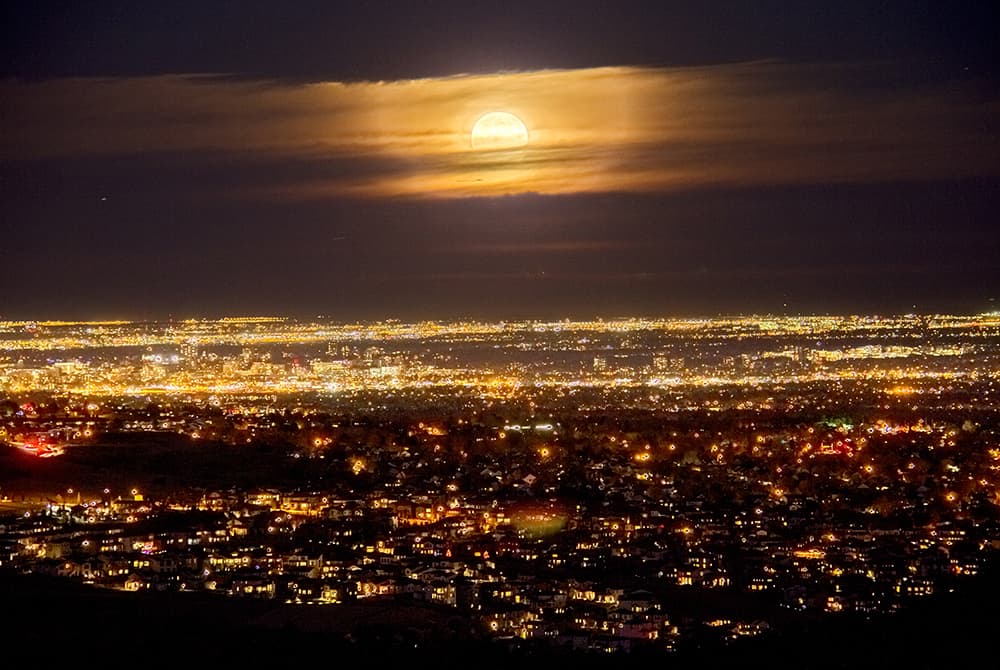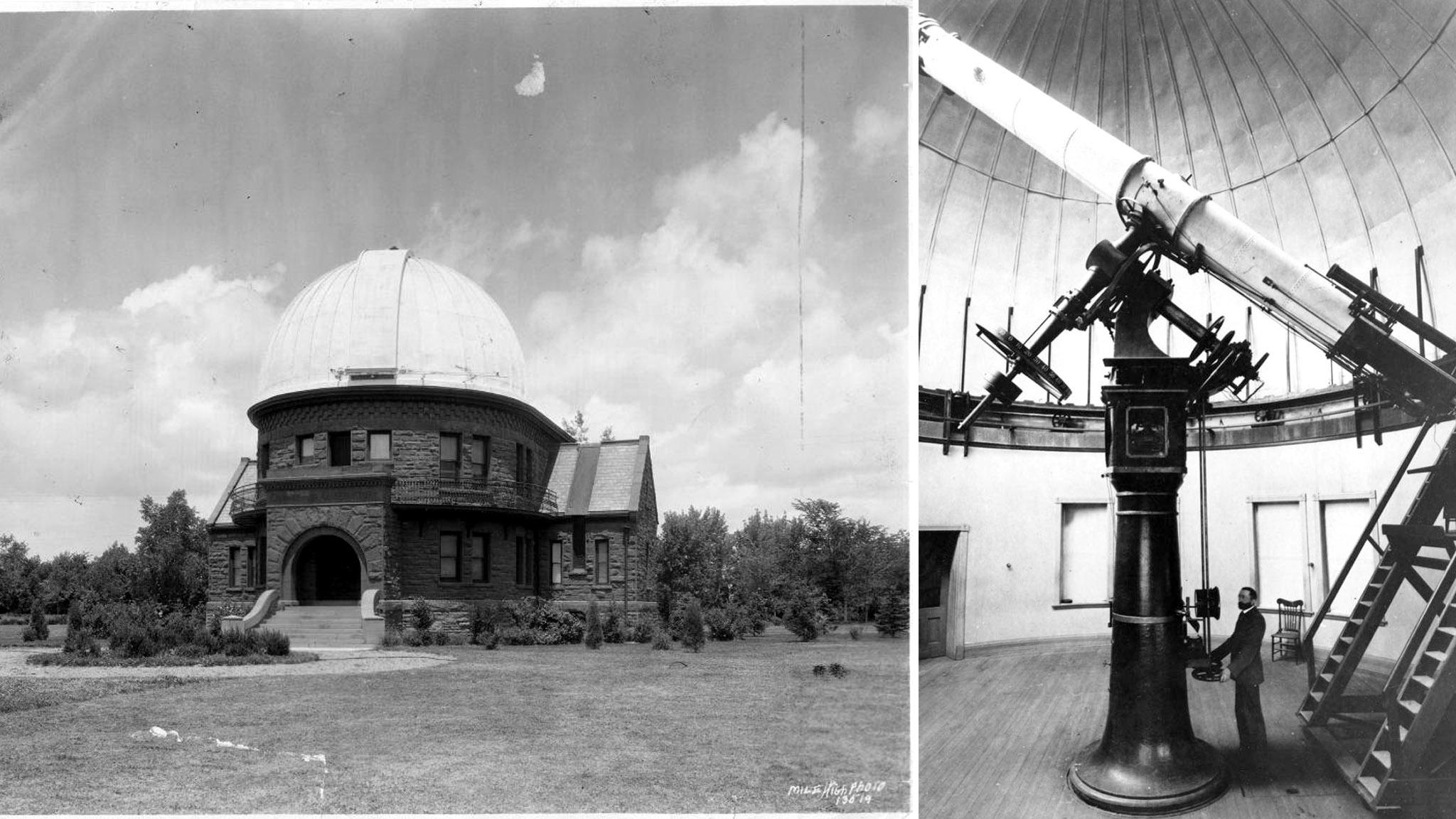A blood moon will be in full swing in the early hours of May 26, between 5:11 and 5:25 a.m. Ron Hranac, member and former president of the Denver Astronomical Society, said you should drive east if you want to see it.
"I will set my alarm and we'll see what the sky looks like," he told us. "If it's cloudy, I'll go back to bed."
The weather may be an issue, since the National Weather Service is calling for some cloudy skies. But it's also not the only difficulty for witnessing this particular moon. The timing will make it tough, since the total eclipse will happen as the sun rises and the moon drops below the horizon. That's why Hranac suggests finding a high place east of the city, unobstructed by trees or buildings, where you'll get to see the transformation before the blood moon sinks below the foothills.
"It's going to be challenging," University of Denver astronomy professor Robert Stencel said. "Doable but not optimal."
Jennifer Hoffman, a supernova expert who is also a professor at DU, said not to worry if you don't get up for this one. There are plenty of webcasts you can watch from the comfort of your bed. She also said we'll have two easier opportunities to see full lunar eclipses in 2022.
Why is it called a blood moon? And also a flower moon?
The "blood" moniker is associated with moons in full eclipse. The moon can appear blood red, or even darker, when it's shrouded by Earth's shadow. The color is something we see from our perspective, a function of particulate matter in the air. Stencel told us volcanic eruptions are big influences in the dust that renders the moon red, though global air pollution also plays a part.
It's also called a "flower moon" since it's the full moon in May. This comes from Ojibwe tradition, and the May moon has other names in other parts of the world.

Bummed you can't get up so early? We have good news: DU's historic Chamberlin Observatory will open to the public soon!
The observatory east of DU, in what is now Observatory Park, was built in the 1890s. It was used for research back when it opened. Hranac said it became more accessible to the general public in the 1950s, when the Denver Astronomical Society began helping run operations there. The organization has been running weekly open houses there for years, though COVID-19 put a temporary kibosh on that.
Hranac and Stencel said they're working to open back up now that the vaccine is proliferating the city. Hranac said the volunteers who make the events happen are still a little wary of getting close to crowds again, but Stencel said they should have something to announce in the next month or so. He said people who are hungry to peer into the old telescope should keep tabs on the Society's twitter feed.
Chamberlin's refracting telescope was cutting-edge when it was built, Hoffman told us, adding it's still in excellent shape.
"The lenses that are in the telescope were state of the art when they are made, and they're still really good," she said.
But light pollution has slowly crept in. DU was "out in the boondocks" when the telescope was installed, Hranac said, and the city's development has slowly degraded its ability to see fainter objects.
Today, people like Hoffman use newer, bigger reflective telescopes to conduct their research. Still, she said, visiting DU's observatory can be a great way for non-scientists to get their fix. Amateur astronomers usually set their own telescopes out on the lawn, so it's also a good place to check out rigs if you're interested in joining the stargazing world.












